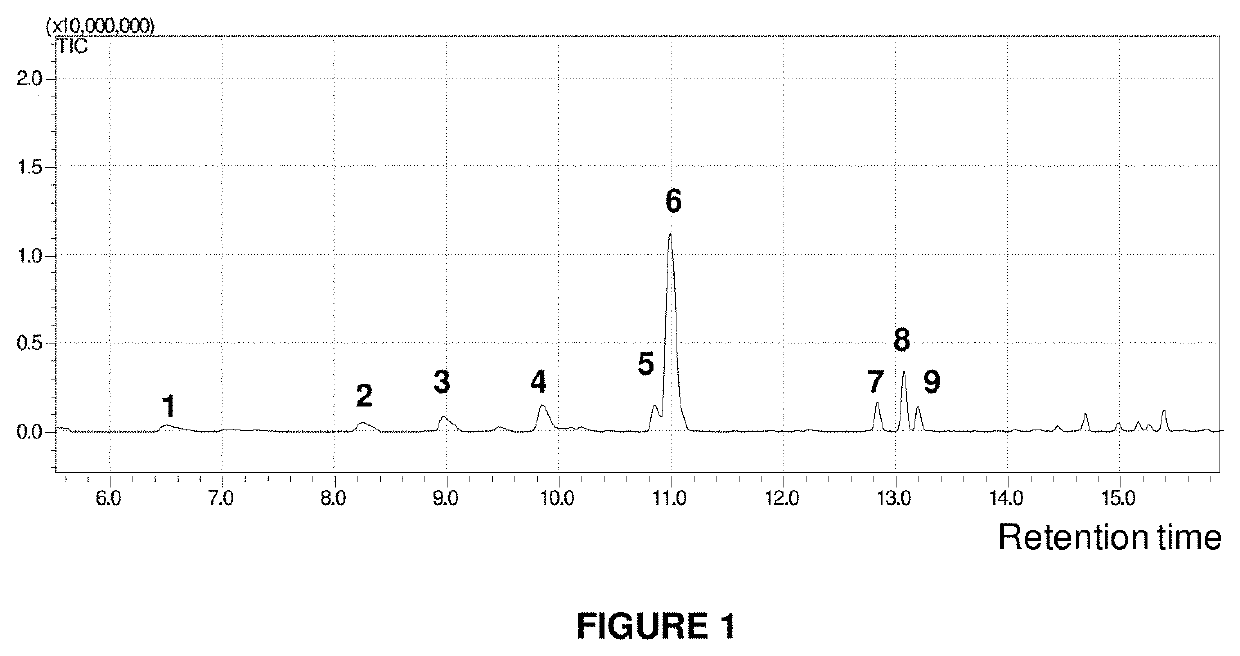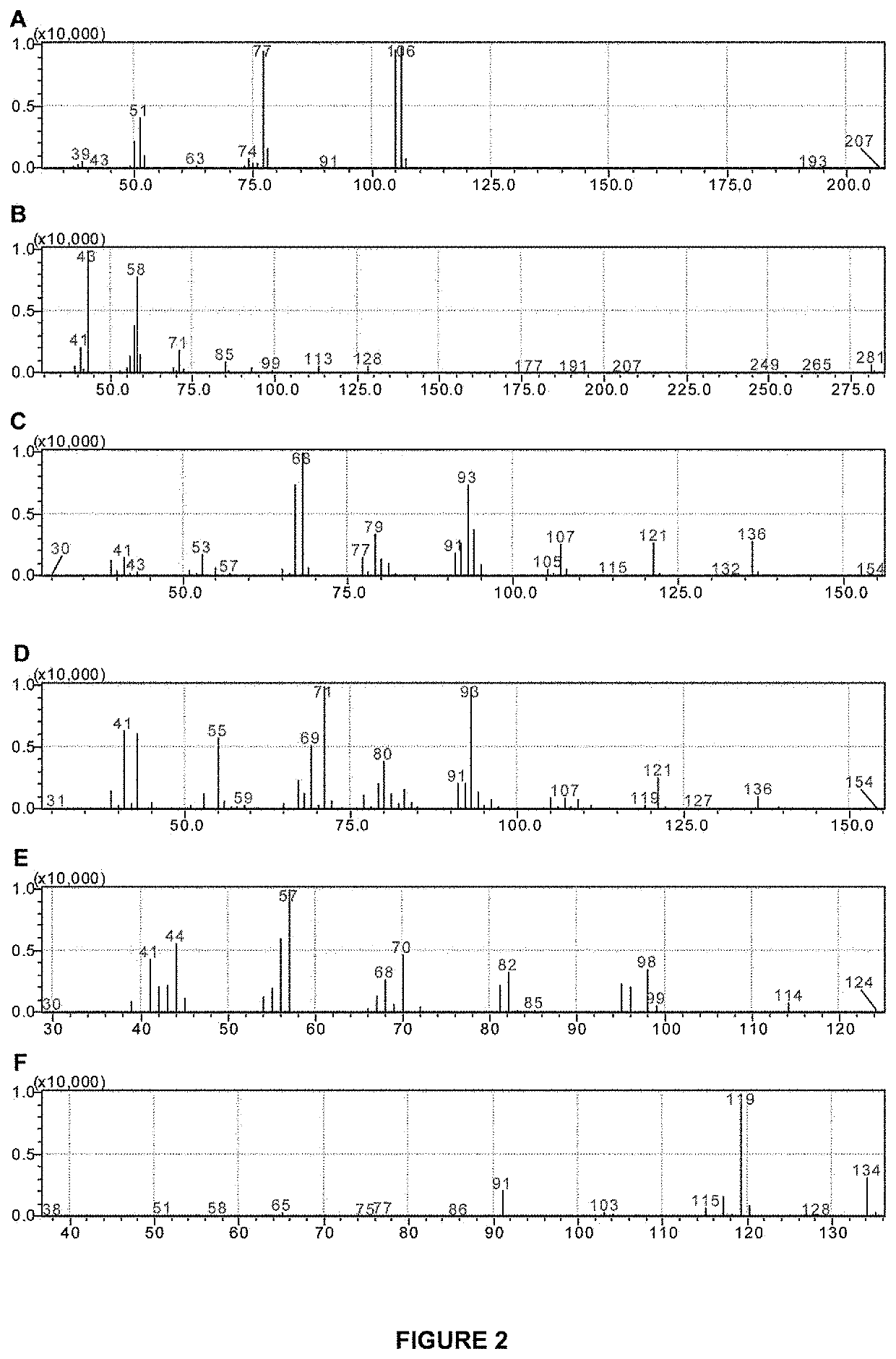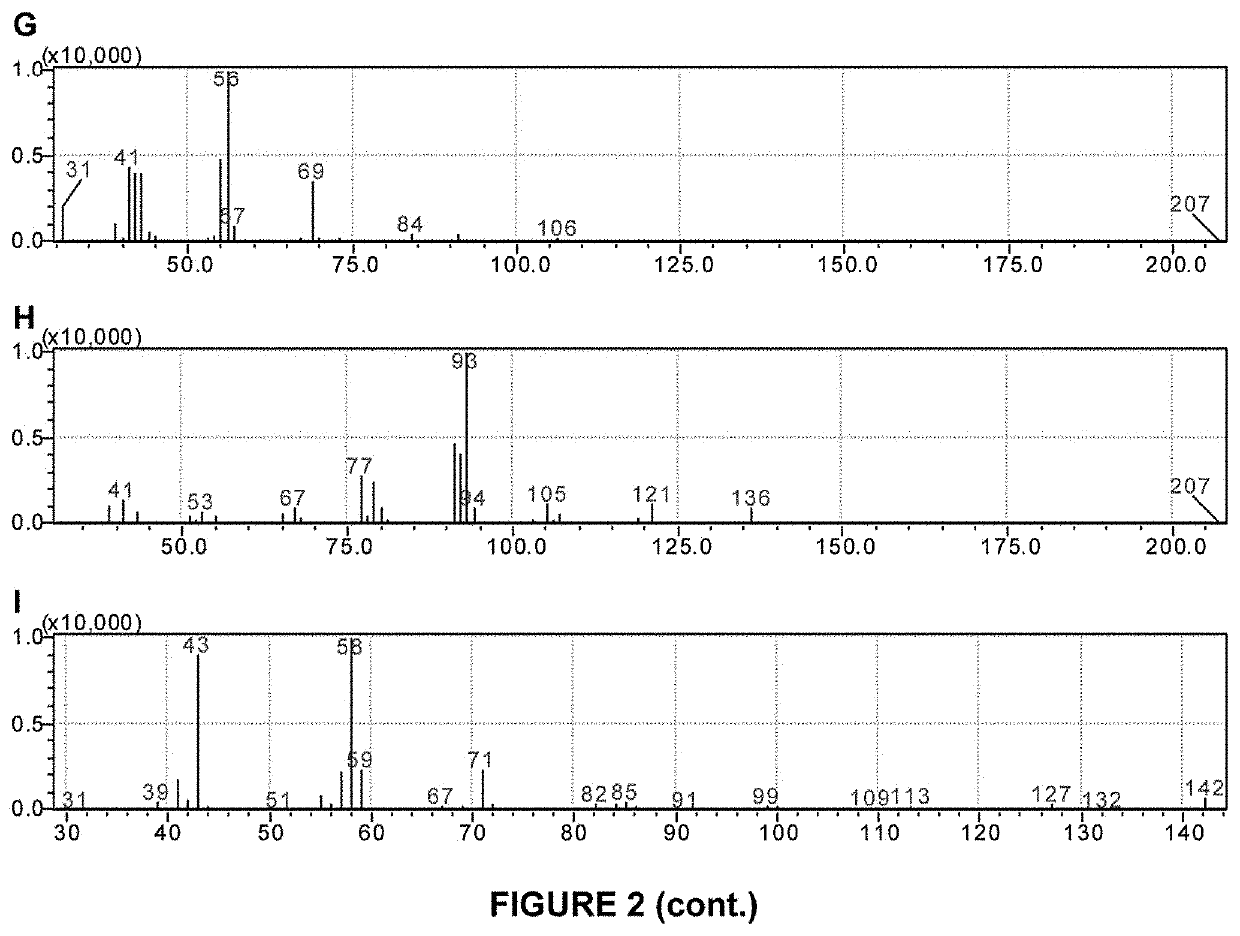Formulation for promoting targeted pollination of almond tree crops in honey bees
a technology for almond trees and honey bees, which is applied in the field of formulations for promoting targeted pollination of almond tree crops in honey bees, can solve the problems of low pollination efficiency of honey bees, and inability to provide reliable and updated information to honey bees, etc., to achieve the effect of stimulating resource collection, promoting pollination, and reducing tim
- Summary
- Abstract
- Description
- Claims
- Application Information
AI Technical Summary
Benefits of technology
Problems solved by technology
Method used
Image
Examples
example 1
ation and Quantification of Volatile Compounds in Almond Flowers
[0058]For identification and quantification of volatile compounds present in almond flowers, the following protocol was used:
[0059]An almond tree branch was selected having 20-30 fresh flowers in the following stages: “bud” and “one-day-old flower”. Together with an exposed SPME fiber (solid phase microextraction) (PDMS type, Supelco®), this branch was isolated using a polyethylene bag, in order to collect the volatiles present in the flowers for a period of 2 hours. Afterwards, the fiber was desorbed in a Shimadzu QP-2010 GC-MS device, in the following conditions: Splitless mode, with helium as carrier gas, injector temperature at 250° C. and interphase temperature at 310° C. The used temperature ramp was: 40 (1)-5-200-15-300 (1); and the column: AT-5 (diameter=0.25 mm, longitude=30 m, film=0.25 mm, flow=1 ml / min).
[0060]For later analysis of the runs and identification of present compounds, NIST05, NIST08 and SHIM2205 ...
example 2
on of Formulations
[0063]3 different mixtures were prepared, each combining between 3 and 4 of the volatile compounds identified in Example 1. The composition of each mixture was:[0064]Mixture I: 50% limonene, 30% linalool, 10% benzaldehyde, 10% Nonanaldehyde.[0065]Mixture II: 50% limonene, 30% linalool, 10% benzaldehyde and 10% 2-octanone.[0066]Mixture III (formulation of the invention): 55% limonene, 30% linalool and 15% benzaldehyde.
In all cases, pure compounds (Sigma-Aldrich®) with over 95% purity were used. The solutions were prepared at room temperature by combining the compounds without the use of solvents. Once prepared, the mixtures were immediately used in experimentation and stored at 2° C.-8° C. until the end of the assays (4 days).
example 3
n of Mixtures Through Differential Olfactory Conditioning
[0067]A differential olfactory conditioning was executed to evaluate the bees' ability to differentiate various scents from the almond natural floral odor. For each scent, 32 to 46 bees were used. Each bee used in the assay was harnessed and presented with the scent associated with a reward (Rewarded-conditioned Stimulus, EC+), and also presented with the almond natural floral odor without a reward (Unrewarded-conditioned Stimulus, EC−). Both stimuli were presented to the bee via a device that delivers the scents through a continuous air stream. A filter paper (30 mm×3 mm) was impregnated with each mixture (4 μl) and introduced in a syringe. On the other hand, fresh flowers from almond trees were placed in a Büchner flask (500 ml) connected to the mentioned device through cannulae. This conditioning was repeated 4 times, with a 15-minute separation between each paired scent presentations, in a pseudo-randomized order. The eval...
PUM
 Login to View More
Login to View More Abstract
Description
Claims
Application Information
 Login to View More
Login to View More - R&D
- Intellectual Property
- Life Sciences
- Materials
- Tech Scout
- Unparalleled Data Quality
- Higher Quality Content
- 60% Fewer Hallucinations
Browse by: Latest US Patents, China's latest patents, Technical Efficacy Thesaurus, Application Domain, Technology Topic, Popular Technical Reports.
© 2025 PatSnap. All rights reserved.Legal|Privacy policy|Modern Slavery Act Transparency Statement|Sitemap|About US| Contact US: help@patsnap.com



